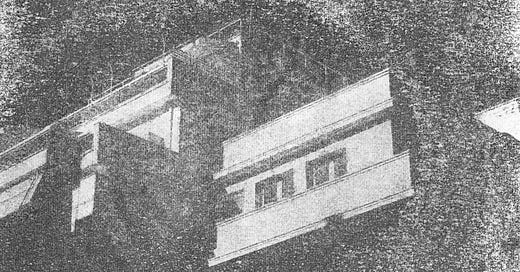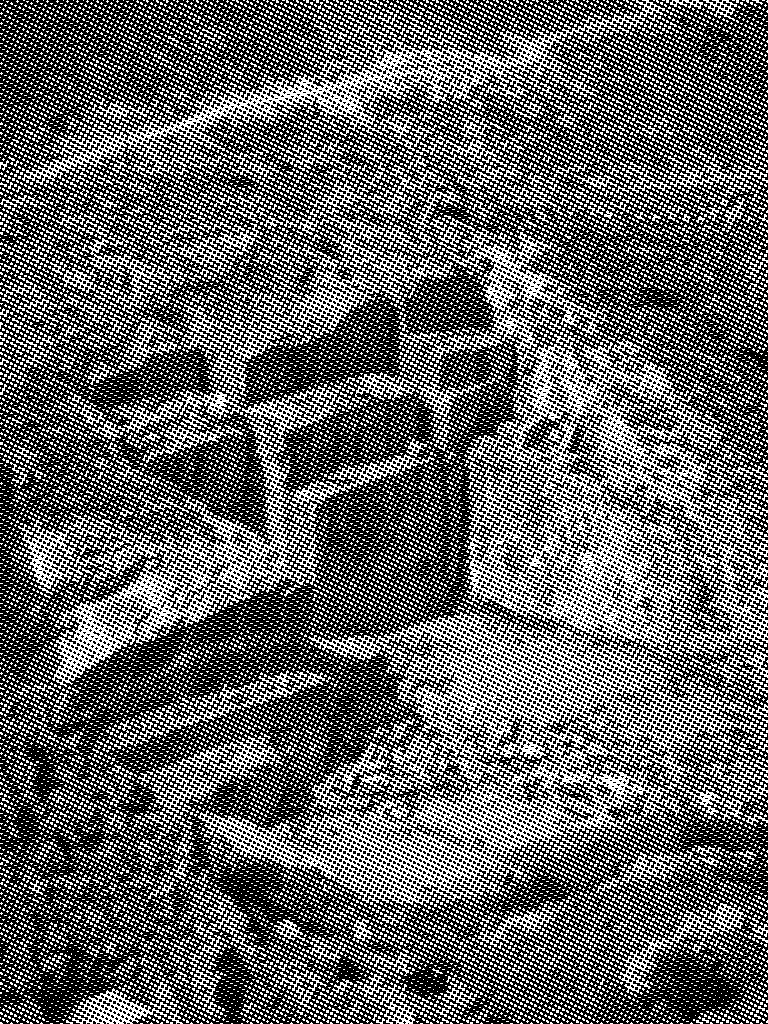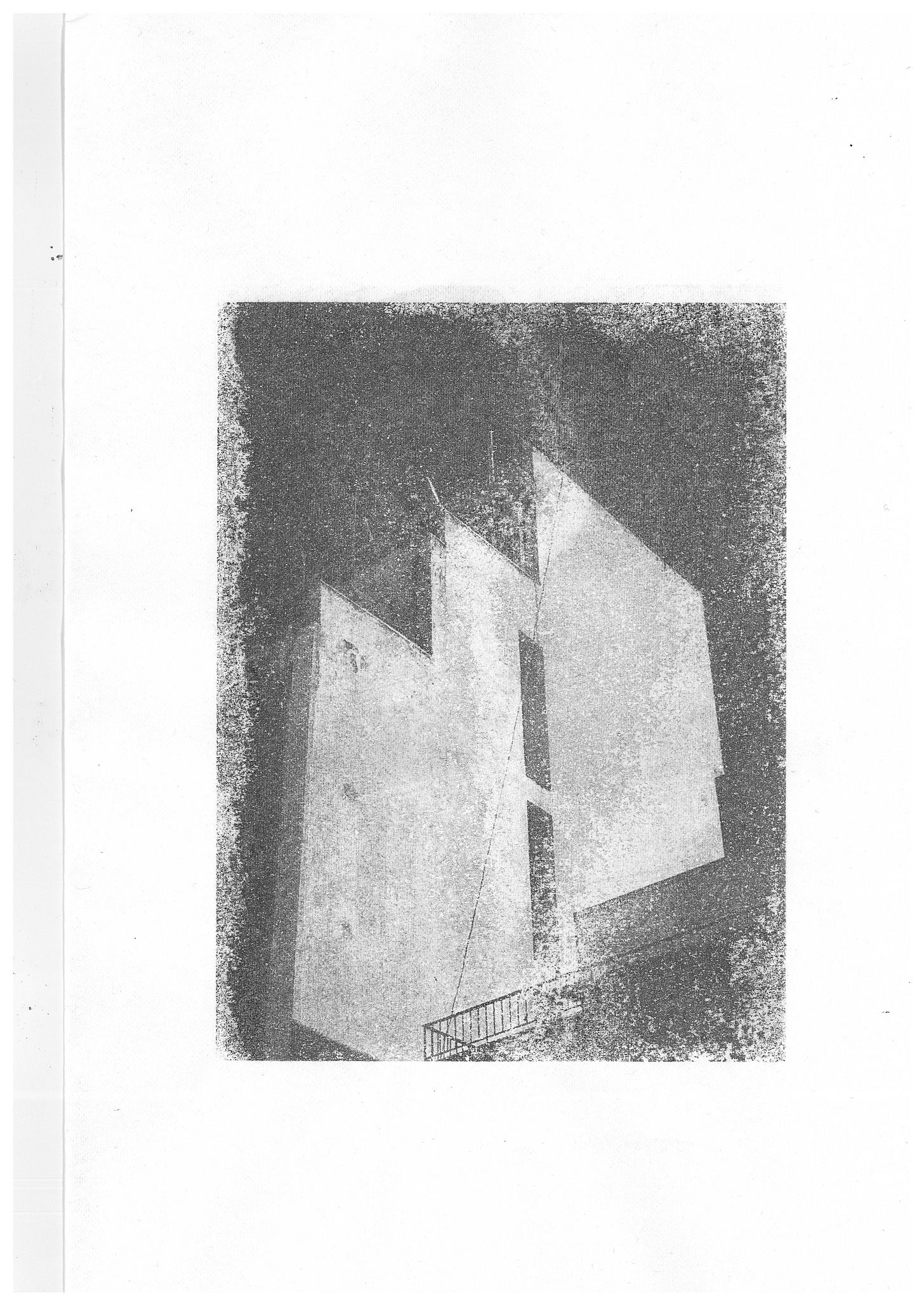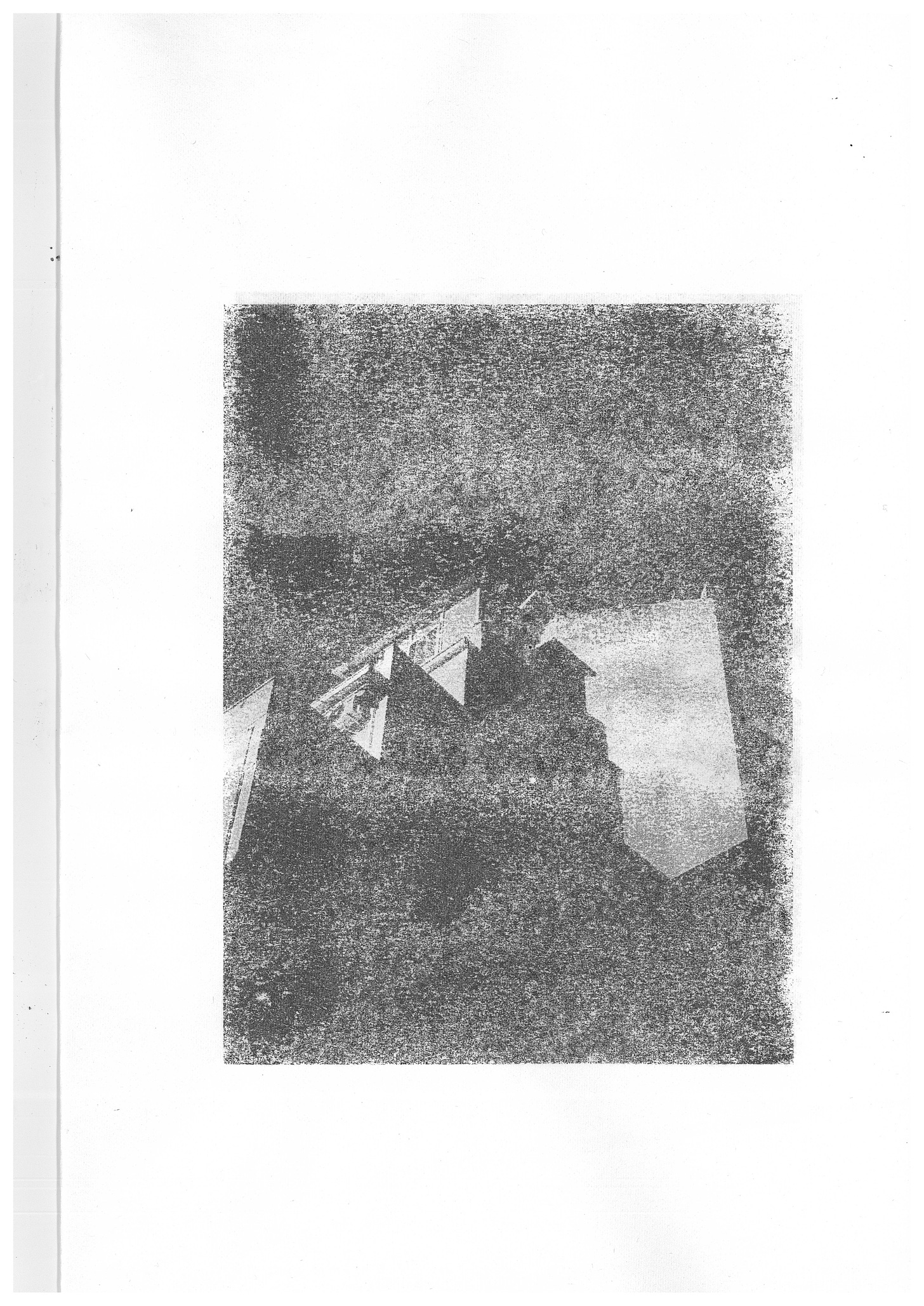“Did I spread my home, over time, along the streets of Lima or did I leave it on Athens’s rooftops?” Carla’s essay, our third written guest contribution, presents us with a set of beautiful and personal musings on home, memory and built environments. The role of spaces and places is as central to AudioSpaces as audio itself (it’s in the name) and I’m excited to begin exploring this topic here on the newsletter.
The sonorous cadence of Carla’s piece gives us clues to a fundamental insight here: the memories we form have as much to do with our coming into contact with the physical places around us, as with what goes on inside our own heads. In other words, outside materiality always meets with internal, immaterial thought; in the process of making memories we feel and transform spaces—and those spaces feel and transform us. This is precisely something that recording and listening to sounds can help us tap into. Pay attention and sense all the material “stuff” around us, and we slowly open up to the fact that the spaces we call home have their own life histories, just like we do: “Can one perceive the stone’s nostalgia for the mother mountain?”
In the same way Carla leads us through lines and bends in the streets of her recent homes, I think about my own making, leaving and recalling of memories formed across London, Sheffield, Manchester, Buenos Aires, each one a multiplicity superimposed on top of itself and one another. Once you’ve read the piece, I’d invite you to consider the same. What goes into your spaces, your memories, your homes?
Read time: 13 minutes.
Two years ago my grandparents fell ill, and with one elegant pen stroke, their home was heavy-heartedly handed over to the next tenants. That happening brought forth my bachelor’s thesis, “Via Buiamonti 33” and after that a whole series of reflections that materialized into my graduation work “Untitled (Stones)”, which became the new foundations of my entire artistic practice.
“Via Buiamonti 33” is a text in which I attempted to meander through different spaces, memories and architectures, as I set out on a quest to understand nostalgia, taking this sentiment and the forms of its existence in relation to space, and to my own personal experience, as my starting point.
As I am honored to share part of my thesis on this platform, I simultaneously feel how things have evolved—how I’ve strolled along new streets and alleys, moving in and out, wandering through new spaces—and question which would be the most apt way to present this excerpt, that appears to me now as a childhood friend I haven’t spoken to in years. And just as in those encounters in which one can feel at once as if nothing has changed, yet everything is completely different, I realize that this is where my thoughts are at now, just down the road from where this text originated, yet miles away.
So finally, I chose to leave it as close to its original version as possible, changing only very few things, accepting that one thing always leads to another, and that those words are the beginning of a path that led me to where I am now, in Lima, Perú, to wander through those spaces I had written of, but that until recently only lived in my memory as echoes of someone else’s life.
“All these things are far, far away, they no longer exist, they never did exist, the Past has lost all recollection of them... Look, seek and wonder, tremble... Already you yourself no longer have a past.”1
N.A.
Athens or Maybe Elsewhere
On a hilltop, that time of the day in which the sun approaches the horizon line, a golden light tints everything of bright sadness as one’s made aware that the day is ending. That after that brief moment of magic the evening will approach, it will get colder and soon it will be night, time to let go of the day so to let another one follow. Sweet, tormented dreams I dream, steeped in nostalgia for this dear but distant hill. Cigarette at hand whilst sitting on stones that have been there for millennia, just at the edge of the cliff, a few centimeters away from the slope. A city expands in every direction, and even where one’s eyes are blinded by something blocking the view, one’s aware that there behind hide more neighborhoods, with more streets, filled with more buildings, with houses filled with more people. This game of hide and seek makes the view feel even greater, even bigger, as Leopardi wrote in his poem L’inifnito: it’s behind the hedge that cuts off one’s view, that the infinite lays.2
Turning one’s head left and right, one can glimpse at parts of the city going on and on and on, in front, behind, up more hills and around others. There tries to be some order, a couple of long straight roads ask for straight buildings alongside them, as if whoever planned them was attempting to impose some sort of stability into the chaos that pervades the urban structure of this (any) metropolis. Straight lines are the one thing that cannot be found in organic structures that exist in nature, and the one line that prevails in the human-made environment. Mark Wigley argues that this is because humans tried to differentiate themselves from nature, to prove the point that we can create what doesn’t already exist, that we differ from the rest and seek, in constructing buildings and environments made solely of these straight lines, the representation of our strength in having been able to achieve this, the representation of immobility in an ever-changing and constantly in motion world that overwhelms.3
What I believe to be the most impactful visual translation of the strength, or perhaps hostility, of the straight line is the amputated landscape of quarries. To see a mountain, with its sharp edges and soft indentations, suddenly split vertically into flat surfaces and immense blocks, is simultaneously terrifying and spectacular—sublime as the Romantics would put it. The contrast between the human intrusion and violation of the natural shapes of then mountain is disarming, the straight edges becoming glorified scars. In this environment, the straightness of the carved slabs is overwhelming in how strongly it defines its position of power over any other sort of line, becoming the absolute sovereign. And these enormous slabs and blocks get dragged away, into factories, into cities, into homes. Can one perceive the stone’s nostalgia for the mother mountain? In a finely decorated marble ledge, or in the monumental frame holding the door to the dome of the city, can one hear the echo of the severed summit?
Could this need for rigid lines be somewhat comparable to the instinct of retreating into one’s past memories as to feel safe, sheltered when the outside world feels out of one’s control?
Returning to the edge of that hill in Athens, considering the straight line as the forceful grid imposed in an attempt of ordered urbanism, and looking over the city, some buildings can be seen managing to escape, making space for strange curves, ambiguous empty (non)spaces and leftover (lovers) corners. Heading north, up the mountain, constructions loose themselves between the swirly crooked streets making it impossible to distinguish what ends where.
As the sunlight embraces the city—antennae and solar panels over metal boilers on roofs sparkle and shine; making it look like one vast sea of white and beige dusty buildings, swinging slowly in what could be a march led by thousands of dreamy people, rocking gently left and right as they make their way. Motionless I observe this vastness. It has the power to make one feel simultaneously immense and minuscule, as much part of the chaos that lays in front of—as much cutoff and shut out of it. One can at once feel a strong sense of belonging and alienation. The size of the body whilst being an observer at a distance is challenged: as tiny as one might feel in comparison to the limitless expansion of the city that lays beyond, each building, street and car that can be seen looks just as tiny—and suddenly the body feels enormous, on top of this hill, so much bigger than anything else it is seeing.
And the more one looks the more one hears. Sounds of honking and sirens blow in the wind, mixing with the soft voice of a woman singing in some square further down, chatter from passersby, a rolling shutter closing with a bang, dogs madly barking and behind it all, the constant sound of the waves breaking evenly against the distant rocky shore, moving stones back and forth. And if one closes one’s eyes and concentrates deeply, one might imagine hearing the echo carried by the sea, of ancient sounds within its waters. A warmth spreads, nostalgia arrives wrapping its arms around my waist giving me goosebumps, making me sigh for all the sunsets missed, smile for all the ones caught, wonder about the ones which might never come and achingly daydream of the ones from remote times, which may never belong to me.
In memories, I get lost. I speak of Athens yet next to Grigoriou Lampraki 46 stands Malecòn Grau 307. Eleven thousand seven hundred and sixty-three kilometers vanquished in an instant, the two cities merging, the two homes softly leaning against one another in my mind, their colors fading into each other. It is Athens I have described, yet it could very well be Lima, some of it might even be Home.
Arriving at each new city, the traveler finds again a past of his that he did not know he had: the foreignness of what you no longer are or no longer possess lies in wait for you in foreign, unpossessed places.4
Flipping through the pages of Calvino’s book and getting lost in its cities, one can run into traces of one’s own home in nearly every page. May it be the attitude or the aesthetics, may it also be a deep desire to find home anywhere it may be, or where it may give us the opportunity of being.
Did I spread my home, over time, along the streets of Lima or did I leave it on Athens’s rooftops? Did I ever really see these cities for what they are, or merely as backdrops to the projections of what I longed for? “Cities are formed as much by ideas as they are by things”, writes Deyan Sudjic in his book The Language of Cities.5 Could this include ideas originating from one’s memories of home, or one’s morals, or one’s taste? Two individuals may never perceive a city in the same exact way although walking through it together, hand in hand, coming from the same home, having the most similar taste. If we can believe with Sudjic that a city is a “sequence of visual and spatial experiences”,6 or perhaps that the architecture of a city is “concrete data of real experiences”,7 then what follows is that each individual will always perceive a city in their own way, based on their own experiences and understanding.
Sudjic also lists unpredictability as a vital element that defines a city, similar to how Mark Wigley states that “a living city can never be finished”,8 and argues that unfinishedness within the urban environment creates possibilities and openness, without denying the uncertainty and precariousness this in-between state can simultaneously create.9 With its chaotic way of being Athens gives, in my opinion, a great example of a never-ending city. With the Parthenon as its symbol, this monument, proof of antiquity yet now lame, unfinishedness stands on a pedestal at the heart of the city.
Greek artist Rena Papaspyrou, in the 70’s, made a work in which she detached part of the wall of the enormous beige apartment building in which she lived, in Kypseli, northern Athens. It was an attempt to take with her, in the moment in which she had to part from a loved space, a trace of it; to be able to always have a piece of that massive architecture, representation of that neighborhood and her time spent there. I find the gesture to be quite moving, undeniable evidence of the impact that the built environment and all the spaces it creates, in and out, has on us. The way we move, feel and even think within a city is entirely influenced, if not manipulated, by the architectural environment by which we find ourselves surrounded. It influences one’s life as much as one’s life influences the way we think of architecture.
Even though what makes a city is more than just its constructed area, it exercises a great deal on our behavior, as we are in constant relation to space and spend our lives moving from inside of it to out, from up to down from a small one to an even smaller one and so on.
“Space is what arrests our gaze, what our site stumbles over: the obstacle, bricks, an angle, a vanishing point.”10
Space is everywhere and everything is in space, and everything that occupies or relates to space within a city is somehow tailored, no matter how immense a building or street it may be, to such a tiny creature such as a human being. Our bodies may (or may not) relate to size, passageways, materials, to the looks of something and the structures that hold something in place, to squeeze in a narrow doorway or to enter through a grand entrance makes its difference, just as much as our personal memory and knowledge of that specific element influences how we feel regarding it. The further the ceiling, the smaller I feel, the bigger the urge not to speak nor to make any sound whatsoever.
I grew up next to the San Nicolao church, in Torre Alta, Lucca. Every Sunday I’d hear the scratching noise of an old loud hailer followed by the badly recorded sound of bells ringing, blowing from the top of the rectangular bell tower, I’d see people stepping out of their cars, greeting each other, walking around the corner towards the entrance, hidden from my viewpoint, where I knew there were four massive cream-colored columns which supported an arch with barrel vaults, some steps, an impressive wooden door and an empty niche on each side of the monumental entrance. My family is not religious, we never went to church, we were never part of that ritual. The first time I stepped into that building for a wedding, I felt the echo of my presence, I felt stares coming my way, questioning my attendance as unbeliever in such a structure of devotion. I had never been so far away from the top of something, reduced to being a disruptive existence to the peace and quiet of a grand space.
I wonder whether my behavior will ever alter in relation to high ceilings. Could that sense of obliged silence, a silence so dense it materializes into the architecture itself, ever mutate? Would it be possible to detach from one’s own spatial memory—or to transform it, throughout a lifetime? How many times can one renew one’s relation to space?
Sources
architectureandurbanism.blogspot.com (accessed February 2023).
Italo Calvino, Invisible Cities, translated by William Weaver (Orlando, Harcourt, 2006).
Giacomo Leopardi, L’Infinito, translated by Livia Russell (The Mario Giacomelli Archive, 2023 [Recanati, 1819]).
Deyan Sudjic, The Language of Cities (London, Penguin Books, 2017).
Georges Perec, Species of Spaces, translated by John Sturrock (Penguin Books, 1974).
Bernd Upmeyer, ‘To be Finished is to be Dead. Interview with Mark Wigley’, MONU, 35 (2022).
Carla F. van den Berg is an Italian visual artist now living in Lima. Her practice revolves mostly around large scale sculptures and site specific installations, reflecting on the value we assign to the past and to ruins, questioning monumentality and finding a great interest in architectural and urban spaces.
Milosz, Poèmes à l’autre moi, as in The Poetics of Space.
Always dear to me was this solitary hill and this hedge, which, from so many parts of the last horizon, the sight excludes. But sitting and aiming endless spaces beyond it, and superhuman silences, and the deepest quiet, I fake myself in my thoughts; where almost my heart scares. As the wind I hear rustling through these trees, I, that infinite silence, to this voice keep comparing: and I feel the eternal, the dead seasons, the present, and living one, and the sound of her. So in this immensity drown my own thoughts: and shipwrecking in this sea is sweet to me.
Giacomo Leopardi, L’Infinito, translated by Livia Russell (The Mario Giacomelli Archive, 2023 [Recanati, 1819]).
Bernd Upmeyer, ‘To be Finished is to be Dead. Interview with Mark Wigley’, MONU, 35 (2022), 8.
Italo Calvino, Invisible Cities, translated by William Weaver (Orlando, Harcourt, 2006), 29.
Deyan Sudjic, The Language of Cities (London, Penguin Books, 2017), 27.
Ibid.
architectureandurbanism.blogspot.com (accessed February 2023).
Upmeyer, To be Finished is to be Dead, 8.
Yet this uncertainty is partially due to the way society is accustomed to look at something finished, returning us to a point stated earlier: buildings and urban environment, in their way of being finished and dominated by sharp straight lines, are just another form of authority and search for stability.
Georges Perec, Species of Spaces, translated by John Sturrock (Penguin Books, 1974), 81.







